Anaphylactic Allergy – The Myths And The Facts

In this day and age, we receive reminders of the severity of allergic diseases on a daily basis. Food allergy warnings are heavily present in places like aeroplanes, schools and hospitality venues. The recent move to highlight the potential of anaphylactic allergy in public places is a great way to raise awareness to the disease and remind those who do not suffer that even their food choices may affect those around them.
In recent years we have seen a dramatic increase in the number of Australians (20%) suffering from allergic disease and these rates are expected to continue to rise. Allergies can be triggered by a number of reasons but the most common include food, insect venom, medicine, exercise and latex.
We’re all too familiar with the traditional warnings of ‘may contain traces of…’ but what if we miss the signs? Or what if you’re in a confined space and decide to have a snack not knowing the person next to you can be sent into anaphylactic shock just from the particles in the air?
Unfortunately, we can’t always prevent and avoid health emergencies. What we can do is accept the fact that anaphylactic allergy is a serious and prominent issue in Australia, but it can be managed. By implementing an education, planning and medicinal strategy for anaphylaxis allergy we can tackle the severity of this condition as a community.
Follow our tips on how to spot the signs and symptoms and provide First Aid for anaphylactic allergy in an emergency.
Allergies VS Anaphylaxis
Allergies are a reaction to foreign substances that our body deems harmful even if the substance does not contain any dangerous elements. The body then goes into fight mode and tries to reject the substance which causes the onset of signs and symptoms such as hives, nasal congestion, itchy eyes and much more.
Anaphylaxis is a severe case of an allergic reaction, not everyone who suffers from allergic diseases will suffer an anaphylactic episode. Once you are diagnosed by your doctor as anaphylactic you will be prescribed an adrenaline auto-injector (EpiPen) to counteract an anaphylactic response.
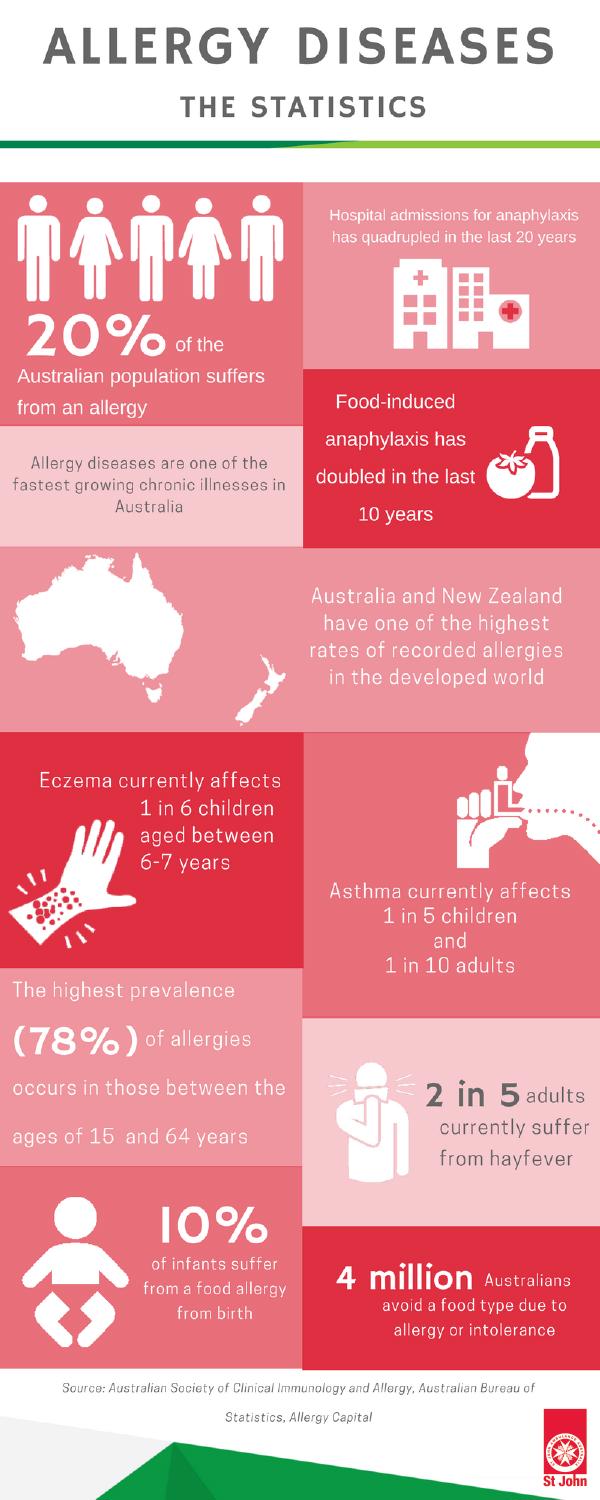
Allergy Triggers
It’s generally unknown why people suffer from allergic diseases but most sufferers have a family history of allergies.
Even though the reason people suffer from allergies is unknown there are certain triggers which are known for causing allergic reactions in people. These include:
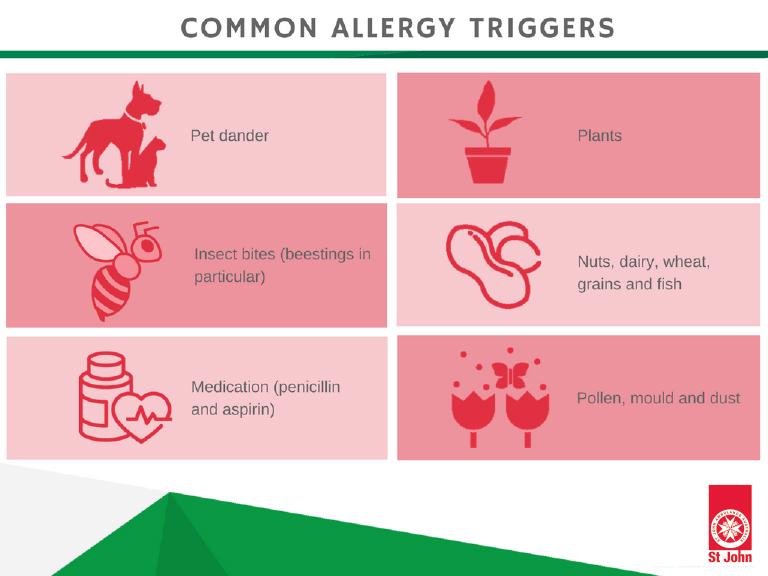
Signs And Symptoms
An allergic reaction can range from mild to severe depending on the exposure to the trigger and the sufferer's tolerance levels. The difference between a mild to moderate allergic reaction and a severe allergic reaction (anaphylaxis) can be distinguished by the following signs and symptoms:
|
Mild To Moderate Allergic Reaction |
Severe Allergic Reaction (Anaphylaxis) |
|
Tingling and itchiness of the mouth and throat |
Loud and difficulty breathing |
|
Swollen lips, eyes and face |
Wheezing and persistent cough |
|
Hives, rash, itchiness on the body |
Fear and anxiety |
|
Vomiting or abdominal pain |
Heart palpitations |
|
Sneezing, runny nose |
Difficulty talking and croaky voice |
|
Swelling in the throat and tongue |
|
|
Pain and tightness in the chest |
|
|
Children may become pale and floppy |
|
|
Loss of strength or consciousness |
If you think you have experienced the above symptoms as a result of an allergic reaction but have not yet been diagnosed, make an appointment with your doctor to discuss further and work out an allergy management plan.
Management For Severe Allergic Reaction (Anaphylaxis)
An anaphylactic episode can be life-threatening if not treated quickly. Follow our First Aid tips on how to manage a severe allergic reaction:
- Follow DRSABCD
- Call triple zero (000) for an ambulance
- Lay the casualty down or in a position which they find easiest to breathe (not standing)
- Ask if they have their adrenaline auto-injector (EpiPen) on them
- If the casualty cannot administer the injection themselves help them
How to give the EpiPen or EpiPen Jr
- Form a fist around the EpiPen. Remove the blue safety release
- Position orange end on the mid, outer thigh (with or without clothing)
- Push down firmly for 3 seconds. Do not jab the casualty
- Record the time the EpiPen was delivered
- If the casualty had not been previously diagnosed and therefore does not have the appropriate medication wait for medical assistance to arrive
- Ensure the casualty remains lying flat. If breathing is difficult allow them to move into a comfortable position to breathe
- Monitor the casualty’s breathing and record pulse
- Once five minutes has passed, if there is no response or improvement administer another dose
Important note: Earlier in 2017 EpiPen released changes to the injection procedure (below).
The changes are applicable to all EpiPen devices which have the old label/instructions on them. There were no changes to the device other than the label and instructions.
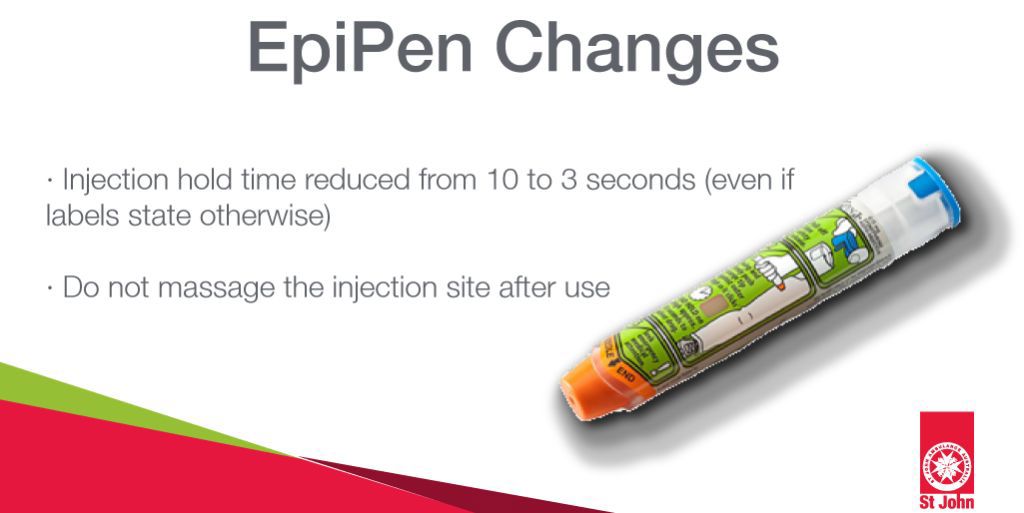
If Your Child Has Anaphylaxis
Parents of children who are diagnosed with anaphylaxis must always be prepared in case their child is exposed to their allergy trigger. Managing a child’s allergy can be made easier by following these steps:
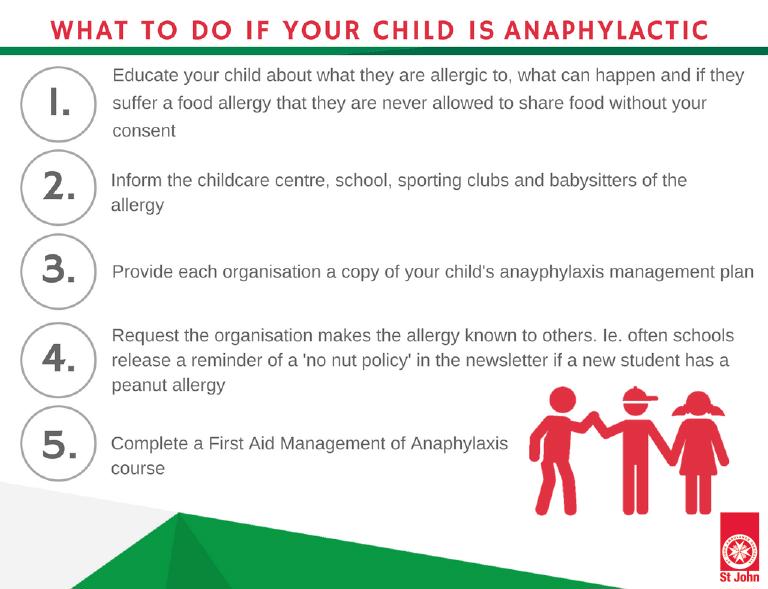
Allergies are serious chronic conditions which affect a large portion of Australians. Luckily thanks to modern day medicine the illness does not have to be debilitating and most sufferers are able to live a normal life.
Some allergy sufferers will only ever experience mild to moderate symptoms whilst others will suffer severe allergic reactions resulting in anaphylactic shock. Those who are diagnosed as anaphylactic must carry their adrenaline auto-injector with them everywhere they go to ensure they are prepared in case they are unexpectedly exposed to their allergy triggers.
In severe episodes of anaphylactic shock, the casualty will not be able to administer the adrenaline themselves. This is why, with such high prevalence of allergic diseases across Australia, even those who do not suffer from the illness know what to do in the case of an anaphylactic emergency.
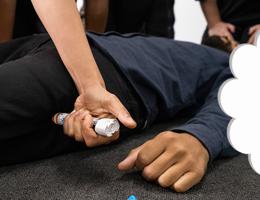
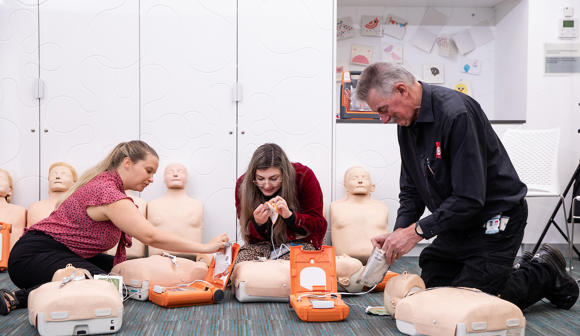
HLTAID011 PROVIDE FIRST AID
Suitable for both people in workplaces and members of the public who would like a comprehensive first aid course.
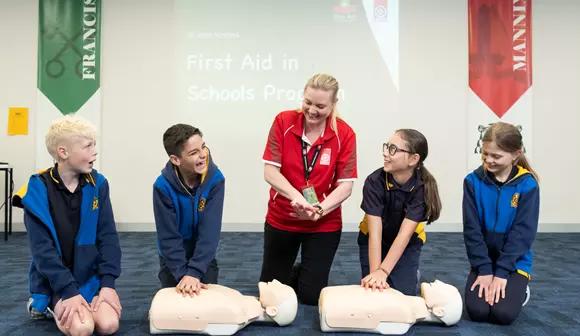
FIRST AID IN SCHOOLS PROGRAM
This free program teaches primary school students the importance of First Aid and what to do in an event of an emergency.

CARING FOR BABIES AND KIDS
Designed for parents and carers. Learn to manage basic first aid situations specific to babies and kids up to 7.
